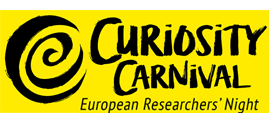Profile
Tom Higham
The Historian
-
Education:
I attended Otago University in New Zealand, and read a BA (Hons) in Anthropology, then a Masters. I read for a DPhil in the Radiocarbon Unit, Department of Chemistry, University of Waikato (New Zealand).
-
Qualifications:
BA (Hons), MA (with Distinction), DPhil.
-
Work History:
Radiocarbon Laboratory, University of Waikato (1991-2001), Oxford Radiocarbon Accelerator Unit, University of Oxford, since 2001.
-
Current Job:
Deputy Director, Oxford Radiocarbon Accelerator Unit.
-
Employer:
University of Oxford
-
About Me
I’m a Professor of Archaeological Science at Oxford University. I specialise in dating the past, in particular archaeological sites, and providing a chronology for what happened thousands of years ago.
-
Read more
I live in Oxford with my wife, Katerina, who works in the same field as me, and our young son Angelo, who is 18 months old. I have two older children, Joe and Miriam, who are at university in New Zealand, where I am originally from. I don’t own a car, but cycle wherever I need to go in Oxford. I play squash to keep fit and play in the Oxford Staff team. I can mimic accents quite well. I like loud rock music and occasionally playing guitar. I was in a band when I was at university. I like travelling to new places, seeing the sites and tasting the local food.
-
My work
Radiocarbon Accelerator Unit, University of Oxford
-
Read more
I am a researcher in the field of archaeological science. My area of interest in dating using radiocarbon. Radiocarbon is the best method we have of dating the human past and covers the last 50,000 years of time. I work on developing the method further and improving it, and also applying it to understand more about the past. I am very interested in figuring out what happened during the period when humans, like us, came out of Africa and met other humans such as Neanderthals and Denisovans in Eurasia. I am keen to find out how much these various human groups overlapped and interacted with each other. I use other tools to understand this, including ancient DNA methods and a technique called ZooMS which stands for Zooarchaeology by Mass Spectrometry. It’s a technique that allows us to identify tiny bone fragments using the protein sequences in them. The method means we can say that a bone is from a hyaena, or a deer or a mammoth. We use it to find human bone fragments from ancient Palaeolithic archaeological sites which we can then analyse using DNA and radiocarbon dating. I work with material from other periods too; the Neolithic, Bronze Age and later times. We use statistical methods based on Bayesian approaches to provide more precise and robust dates.
-
My Typical Day
My typical day is usually spent between the office, the field or museum, and the lab. Around 1/3 of my time is spent outside the UK, collecting samples for analysis and dating from archaeological sites and museums. In Oxford I write papers and grant applications, coordinate lab work and preparation and analyse data.
-
My Interview
-
How would you describe yourself in 3 words?
Enthusiastic. Happy. Curious.
What's the best thing you've done as a researcher?
Finding out that Neanderthals and modern humans overlapped for perhaps several thousand years in Europe, before the disappearance of Neanderthals at ~40,000 years ago. I want to know whether this date is the same across Eurasia, or whether there might be pockets of Neanderthals that survived later.
What did you want to be after you left school?
I had absolutely no idea, just that I wanted work to be equivalent to fun. That’s my job now.
If you weren't a researcher, what would you be?
Perhaps a writer.
What is the most fun thing you've done?
Spending a few days on the Copacabana beach with my wife, seeing the sites of Rio de Janiero, including the Christ Statue and the markets and beaches of Ipanema and Copacabana.
Tell us a joke.
How do you know your physicist friend is an extrovert? Instead of looking down at his own shoes he starts looking at yours.
-


Comments